Closure
MFA Graduation Exhibition 2009
March 30 – May 2, 2009
USF Contemporary Art Museum
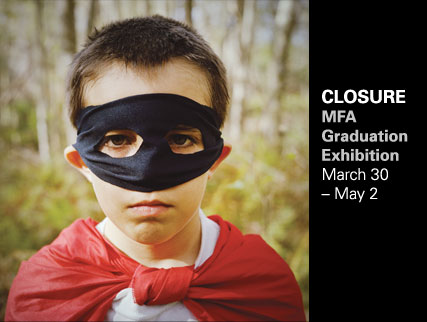
MFA Graduates:
Kimberly Adams
Jeremy Chandler
April Childers
Rebecca Flanders
Chad Harmon
Shane Hoffman
Lauren Alyssa Howard
James Reiman
Iván Reyes García
Marta Slaughter
Jonathan Charles Vaughan
Wesley Wetherington
School Director’s Statement
Congratulations to the Master of Fine Arts students in this exhibition; they represent one of the strongest classes of graduating artists in recent history.
For three years, these exceptionally creative students have engaged our distinguished faculty and endured challenging critique sessions as well as sleepless nights preparing for semester reviews. They have been stretched well beyond their initial perceptions of what art can be and its impact on an audience.
The MFA at USF is acknowledged as a premiere program among its peers nationally. Its uniqueness resides in a demanding curriculum of studio practice and inquiry coupled with critical studies seminars in the history of art and electives throughout the disciplines of a major research university.
Faculty welcome the prospect to connect with the students, responding to new concepts and working as collaborators as well as conductors to uncover fresh dimensions in the forms, objects and images that are created. Our valued staff provides resolve and ingenuity in solving formidable problems, from bureaucratic labyrinths to one-of-a-kind projects.
The MFA program offers every graduate student the opportunity to work in any medium of materials and to select from our diverse faculty for directed study contracts. Virtually unheard of at other institutions, this open invitation to explore and discover, leads to startling and innovative results. The fruit of this philosophy toward graduate art studio studies, along with a varied student body from throughout the nation and beyond, endows this exhibition with a multivalent intensity.
The unorthodox nature of many of the artworks has generated a tremendous amount of consultation and cooperation between the Museum staff and our students. We offer our deep gratitude for assisting these artists in realizing their envisioned realities and developing this exhibition.
And, again, congratulations to our graduating MFA students. The graduate studio experience affords the time and community to expand ideas about art and oneself, and the relationship of the two to the larger world. USF has benefited from your presence and we wish you the very best.
Wallace Wilson | Director, USF School of Art and Art History
Foreword & Acknowledgements
The USF Contemporary Art Museum | Institute for Research in Art,
a nationally accredited museum within the structure of a major metropolitan university, provides a crucial component to the educational process for all students, but is of special importance to
the students in the School of Art and Art History.
The museum is an exciting destination for students to see the works of emerging and established artists. In conjunction with its exhibition program, USFCAM offers opportunities to interact with artists, curators and scholars through informal discussions and colloquia. It also offers directed study and internship programs, providing real-life experiences that have valuable significance to the emerging artist. Given this context, it is also important for students
to fully participate as artists on the contemporary scene. The annual MFA Graduation Exhibition provides this occasion.
USFCAM is proud to showcase Closure, the 2009 MFA Graduation Exhibition of the School of Art and Art History, with works by Kimberly Adams, Jeremy Chandler, Rebecca Flanders, Chad Harmon, Shane Hoffman, Lauren Alyssa Howard, James Reiman, Iván Reyes García, Marta Slaughter, Jonathan Charles Vaughan and Wesley Wetherington. Congratulations to these students, the School’s faculty and staff, friends, colleagues and the community at large that support the artists in this first distinguished milestone in their professional career.
I thank the museum staff for their collaborative spirit in organizing and presenting this exhibition, especially Tony Palms who is responsible for its design in consultation with Bradlee Shanks, Graduate Student Advisor and Assistant Professor, in the School of Art and Art History. Thanks also to Vincent Kral, Hiroki Haraguchi, Kris Hechevarna and Matt Schlegbaum, for their assistance with the installation and to Don Fuller for his design work, including this publication.
Members of the Institute for Research in Art are recognized for their extended efforts to realize the exhibition and related programs: Margaret Miller, Director; Shannon Annis, Peter Foe, David Norr, Noel Smith, Summer Smith, David Waterman and Randall West.
Alexa Favata | Associate Director, USF Institute for Research in Art
DOWNLOADS:
Exhibition Brochure
PARTICIPATING ARTISTS:
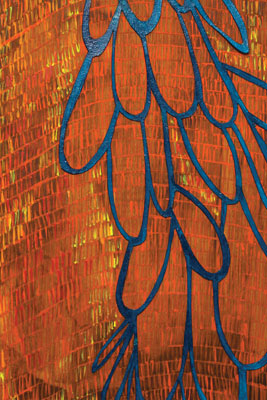
Kimberly Adams
Salineville, Ohio
B.F.A., Bowling Green State University, 2005
As I utilize my surrounding visual playground of color and structures, visual ideas coalesce. Repetition through pattern and positive/negative space lay a foundation for the work. As it develops, delicately painted paper is applied to provide layers of transparency and a new ground to continue working on. Objects attached to the paintings begin to mingle with the forms on the surface, casting a wide range of shadows that become part of the paintings’ surface. These paintings are produced as an intuitive response through the materials which translate my observations.

Jeremy Chandler
Live Oak, Florida
B.F.A., University of Florida, Creative Photography, 2005
In my work, I have become increasingly interested in people’s relationship with the natural environment. Particularly, how nature is often used as a space to assert dominance, power, and identity while dually functioning as a place of escape. I have explored communities that exist in isolation and am intrigued with the ways in which cultural archetypes can both dissolve and perpetuate within secluded spaces.In my work, I have become increasingly interested in people’s relationship with the natural environment. Particularly, how nature is often used as a space to assert dominance, power, and identity while dually functioning as a place of escape. I have explored communities that exist in isolation and am intrigued with the ways in which cultural archetypes can both dissolve and perpetuate within secluded spaces.
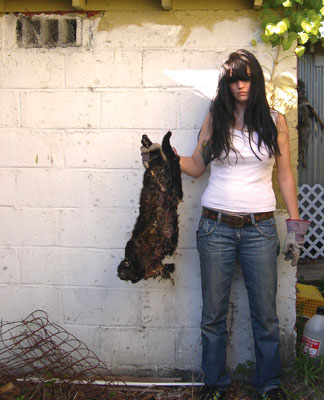
April Childers
Strawberry Plains, Tennessee
B.F.A., University of Tennessee, 2004
I have recently been retaining and re-animating deceased domesticated animals. I understand this as being an example of a taxidermical science coming to the aid of our emotional world. Our relationships with animals can bring strange and eerie insights into our complex and irrational emotional realms. However this relationship is hardly symbiotic; the animal is dead.
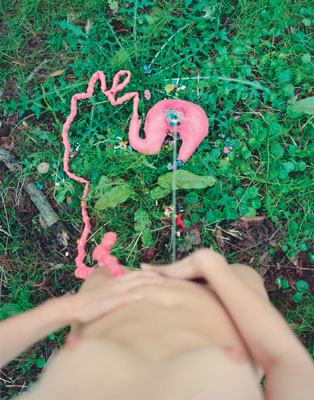
Becky Flanders
Washington D.C.
B.S., Artificial Life & the Digital Arts
University of Maryland Baltimore County, 2002
Flanders recent work deals with female standing urination, a long overlooked phenomenon with far reaching implications for the construction and reconstruction of gender through the physical experience of having and using sexed bodies. Her large format photographs explore new ways to view both the cultural phenomenon of femininity as well as the female body itself.
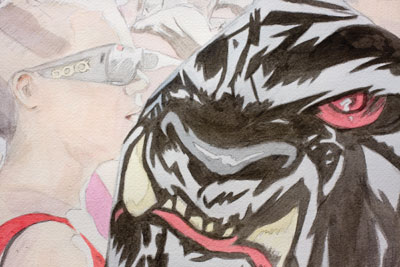
Chad Harmon
Sullivan, Missouri
B.F.A., Missouri State University, 2003
Chad Harmon’s works are large format watercolors emphasizing the gestures, interactions, and positioning of people in the crowd. The sources of the final work come from the initial photographs he takes of real crowds in a short time frame from a fixed position. Several images are combined illustrating how the different members of the crowd moving in time and space reveal social dynamics.
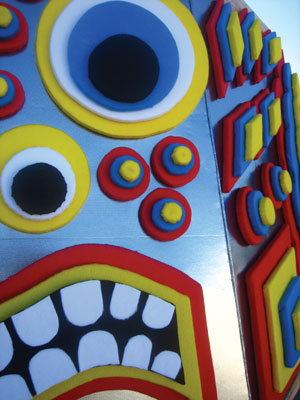
Shane Hoffman
Baltimore, Maryland
B.A., University of South Florida, 1998
There are times when I wonder how a flying monkey became king of my mind’s meanderings, but mostly, I just obey.

Lauren Alyssa Howard
Smiths Station, Alabama
B.F.A., University of Georgia, 2005
I use my deconstructed memories of the rural lower class as a vehicle for stimulation through texture, color, and investigation in order to comment on the gender roles of the “southerner.” By placing objects of the grotesque next to or inside small, decorated spaces, a discomforting tension is created that I explore through the use of drawing, painting, and sculpture. Placing upholstery, carpet, and furniture indicative of lower class homes in the 1970’s and 1980’s into non-traditional places, allows for a break up of the space and an interruption of the viewer’s notions of reality and memory. At the same time, through the use of symbols such as deer and sheep (stand-ins for the male and female), I create an alternate world where masculine and feminine become both ambiguous as well as polar opposites, as humans interact with and even begin to become animals.

James Reiman
East Wenatchee, Washington
B.F.A., Central Washington University, 2005
Through my images I attempt to seek out and come to terms with the real and imagined experiences associated with the loss of my father at an early age. My most recent body of work is an allegorical series of photographs in which I reimagine my past, revisiting the hopes and desires of my childhood, while attempting to examine the cultural structures that informed the construction of my identity.
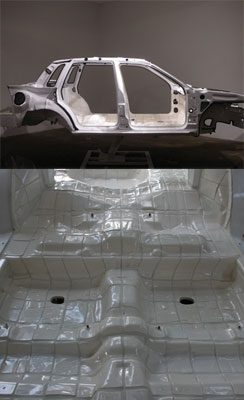
Iván Reyes García
Fajardo, Puerto Rico
B.F.A. Sculpture, Escuela de Artes Plasticas,
San Juan, Puerto Rico, 2004
Living in a country where everyone speeds along beside you, you can’t help but wonder whether it is an excuse or a need. In Puerto Rico we grow up observing the preparations for New Year festivities. The automobile plays an intricate role in the celebrations, often with fatal results. My childhood in the 1980s coincided with one of the social groups - the cocolos, known for a passion for automobiles and the rhythm of salsa music. This was the social group that created the “low-rider”, the image of Christ imbedded onto the headlights, zebra skin print interior and the shiny wax finish.
Perhaps it was the need to understand why so much attention was given to a car (which is an object), rather than to an individual… and perhaps that is what caused me to try to understand why a car is so important in these social groups.
The ritualization in my work has its purpose and definitiveness in exposing the connection between humans and objects. As per the car, throughout the twentieth and twenty-first centuries, the car has become the ultimate human appendage, an extension of the flesh, an expression of human will, of body and sexuality; flesh and metal, man and machine.
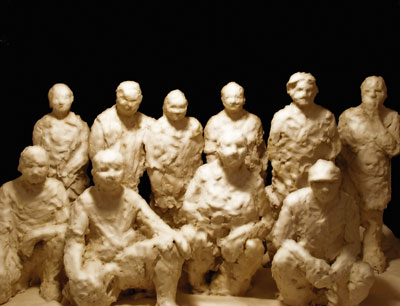
Marta Slaughter
Nashville, Tennessee
B.F.A., Middle Tennessee State University, 2001
Using both found and personal photographs as inspiration, I utilize a multi-layered approach to material, creating sculpture, paintings and photography that transform the initial source image and strives to empathize with human experience. I am also interested in the tenuous nature of familial relationships, the unpredictable bonds between strangers and the importance of both the living and the dead, the known and the unknown.
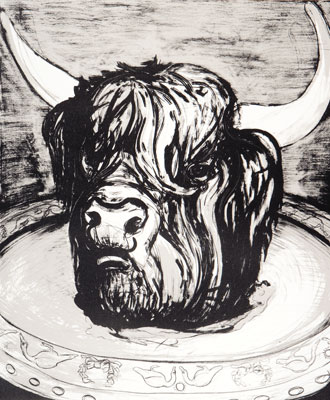
Jonathan Charles Vaughan
Longwood, Florida
B.F.A., The School of Visual Arts, 1999
M.A.T., The University of the Arts, 2002
The body of work that I am presenting in this exhibition exists collectively as a vehicle through which socially identifiable associations of gender have been utilized to purposefully raise questions about the constructs that they define. The work is a coded narrative that symbolically establishes the dual nature of gender identities through a series of lithographic prints, loosely held in a portfolio, that is housed within a wooden box with cow hide panels. Both the imagery and the materials utilized are purposefully recognizable through the cultural constructs of gender, in particular masculinity, but as the viewer works their way through the object these concepts become confused and unclear. Masculine and feminine materials, ornamentation, and recognizable archetypes, all blend together in a complex dialog through which revelations are made with each layer that is exposed.
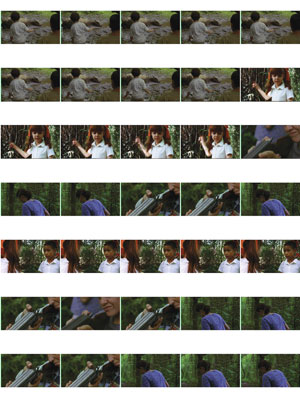
Wesley J. Wetherington
Tampa, Florida
B.A., Studio Art, University of South Florida, 2002
I start with the gesture and with a looping sense of time that is elliptical rather than straight up and down. I develop these fragments into a larger whole, creating a rhythmic buildup. The work walks the line between trance and trauma, between the persistence of vision and the dissonance of short staccato. I strive for something new. These pieces are unsettling, enervating. They develop as loops, as quick staccato. They are inter-cut, interspersed, jump cut, recombined, cut again, looped on themselves, played back atop themselves, played back with others, played back with none, folded in upon themselves. They are structured by gesture, by time, by sound. They are an unthreading, a pulling at the seams of narrative film in order to play with the stuffing inside and the thread and the fabric all along the surface. They are film in exploded view; film in unconscious splendor. The experience of this work is one of unease. It is a kind of perpetually withheld refrain. These works are an ever-present question for me –they hover around such issues as the nature of consciousness, of memory and the experience of time. The reception of this work is one of disarmament. It is both hypnotic and staccato, both entrancing and traumatic.